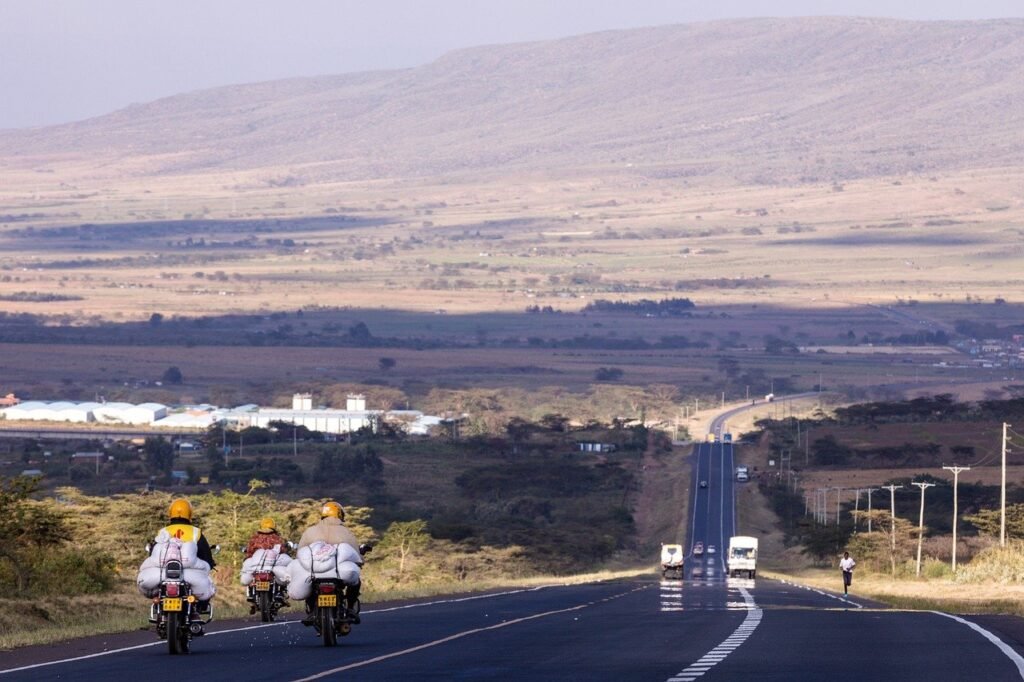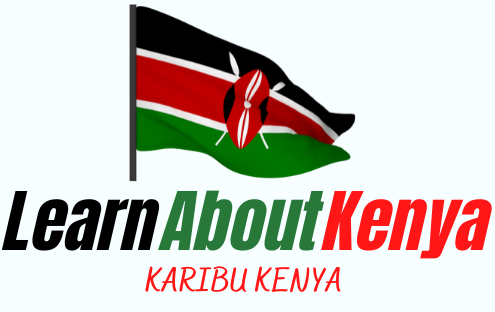What Is The Population Of Kenya?
Did you know that Kenya, a beautiful country in East Africa, boasts a diverse population that is both vibrant and intriguing? From its bustling capital city, Nairobi, to the rural villages spread across its stunning landscapes, Kenya is home to over 50 million people. With a rich cultural heritage and a blend of different ethnic groups, this nation is filled with fascinating stories waiting to be discovered. Join us as we explore the population of Kenya and delve into the unique characteristics that make it a truly remarkable country.

Geographical Overview of Kenya
Location
Kenya is located in East Africa, bordered by Ethiopia to the north, Somalia to the northeast, Tanzania to the south, Uganda to the west, and South Sudan to the northwest. It lies astride the equator, with the Indian Ocean to its southeast. This strategic location has not only made Kenya a gateway to East Africa but also contributed to its rich cultural diversity.
Size
Covering an area of approximately 580,367 square kilometers (224,081 square miles), Kenya is the 47th largest country in the world. It extends about 1,131 kilometers (703 miles) from north to south and 1,025 kilometers (637 miles) from east to west. The diverse geography of Kenya encompasses highlands, low-lying coastal areas, and the Great Rift Valley, making it a captivating destination for adventurous travelers.
Borders
Kenya shares borders with five countries. To the north, it is bordered by Ethiopia, which spans approximately 861 kilometers (535 miles). To the northeast, Kenya shares a border of about 682 kilometers (424 miles) with Somalia. Along its southern border lies Tanzania, spanning approximately 769 kilometers (478 miles). Uganda and Kenya share a border of about 933 kilometers (580 miles), while South Sudan and Kenya share a border of approximately 317 kilometers (197 miles). These borders have played a significant role in shaping Kenya’s history and culture.
Brief History of Kenya
Pre-Colonial Era
Before the arrival of European colonizers, Kenya was home to various indigenous communities. These communities, including the Kikuyu, Luo, Luhya, and Maasai, had diverse cultural practices, languages and thrived on agriculture, trade, and hunting. They had established organized societies with defined leadership structures and systems of governance.
Colonial Period
The colonial period in Kenya began in the late 19th century when European powers began establishing their presence in Africa. The country became a British protectorate in 1895 and a British colony in 1920. The colonial era witnessed significant changes in the socio-political landscape of Kenya, including the introduction of cash crops, infrastructure development, and the construction of the Mombasa-Nairobi railway. However, it also brought about the displacement of indigenous communities and the loss of land.
Independence
After years of struggle and activism, Kenya gained its independence from British colonial rule on December 12, 1963. Jomo Kenyatta, who had been a prominent figure in the fight for independence, became the first President of Kenya. The country transitioned into a democratic republic and embarked on a path of nation-building and development.
Kenya’s Demographic Profile
Ethnic Groups
Kenya is home to various ethnic groups, with the largest being the Kikuyu, Luo, Luhya, and Kalenjin. These ethnic groups, along with smaller indigenous communities such as the Maasai, Turkana, and Kamba, contribute to Kenya’s rich cultural heritage. Each ethnic group has its own unique traditions, languages, and customs.
Languages
The official languages of Kenya are English and Swahili. English is widely spoken in urban areas, government institutions, and educational settings, while Swahili is the national language and is spoken by the vast majority of the population. Additionally, various ethnic languages are spoken by different communities, adding linguistic diversity to the country.
Religion
Kenya is a religiously diverse country, with Christianity being the most practiced religion, followed by Islam. Other religions, such as traditional African religions and Hinduism, also have a presence in Kenya. The religious landscape of Kenya has contributed to cultural exchanges and peaceful coexistence among different communities.
Urban vs Rural Population
Kenya has experienced rapid urbanization in recent decades, with a significant portion of the population residing in urban areas. Cities such as Nairobi, Mombasa, and Kisumu have seen substantial growth and development. However, a substantial portion of the population still resides in rural areas, where agriculture and traditional livelihoods prevail. This urban-rural divide presents both challenges and opportunities for Kenya’s development.

Census in Kenya
Importance of Census
Censuses play a crucial role in collecting data on a country’s population, providing valuable insights for policymaking, resource allocation, and planning. In Kenya, censuses are conducted periodically to gather information on the population’s size, composition, and demographic characteristics. This data helps the government and other stakeholders make informed decisions to address various social, economic, and developmental issues.
Census Frequency
In Kenya, a national census is conducted approximately every ten years. The most recent census was conducted in 2019, with previous censuses taking place in 2009, 1999, and so on. These regular censuses ensure that population data remains up-to-date and accurate, facilitating evidence-based decision-making in various sectors.
Population Growth in Kenya
Factors Influencing Population Growth
Several factors contribute to population growth in Kenya. These include high fertility rates, improved healthcare leading to reduced mortality rates, rural-urban migration, and improved living standards. The combination of these factors has resulted in significant population growth over the years.
Historical Population Trend
Kenya’s population has experienced steady growth over the years. In 1970, the population was approximately 11 million, and by 2019, it had reached around 47 million. This population growth has presented opportunities as well as challenges for Kenya’s development, such as increased demand for education, healthcare, and infrastructure.
Projections for the Future
Projections indicate that Kenya’s population will continue to grow in the coming years. By 2050, the population is estimated to reach approximately 95 million. These projections highlight the need for strategic planning and investment in sectors such as healthcare, education, and infrastructure to accommodate the growing population.
Current Population of Kenya
Official Estimates
According to official estimates, Kenya’s population is approximately 47 million as of 2019. However, it is important to note that population estimates are continually being updated as new data becomes available. These estimates serve as a basis for policymaking and resource allocation.
Population Distribution by Region
The population of Kenya is not evenly distributed across the country. Nairobi, the capital city, has the highest population density, followed by other major urban centers such as Mombasa and Kisumu. Coastal regions, the Rift Valley, and parts of Nyanza also have relatively high population densities. In contrast, arid and semi-arid areas, such as northern Kenya, have lower population densities.
Age Structure
Kenya has a relatively young population, with a significant proportion under the age of 18. The age structure reflects the country’s high fertility rates and highlights the importance of investing in education, healthcare, and other services to support the needs of the younger population.
Urbanization in Kenya
Urban Growth
Kenya has experienced rapid urban growth in recent years. Cities and towns have expanded, offering opportunities for employment, education, and improved quality of life. This urban growth has been fueled by factors such as rural-urban migration, industrialization, and the concentration of economic activities in urban areas.
Largest Cities
Nairobi, the capital city, is the largest and most populous city in Kenya. It serves as the financial, political, and cultural hub of the country. Other major cities include Mombasa, Kisumu, Nakuru, and Eldoret. These urban centers play a significant role in driving economic growth and development.
Migration Patterns
Internal Migration
Internal migration, particularly from rural to urban areas, has been a prominent feature of Kenya’s demographic landscape. Rural-urban migration is driven by factors such as the search for better economic opportunities, education, and improved living standards. This internal migration has contributed to the growth and development of urban areas.
International Migration
Kenya is also a destination for international migration, with immigrants coming from neighboring countries such as Somalia, Ethiopia, and Uganda. These immigrants contribute to Kenya’s cultural diversity and play a role in various sectors of the economy, including trade, education, and healthcare.
Population Challenges in Kenya
Rapid Population Growth
Rapid population growth poses several challenges for Kenya. It places strain on resources such as water, food, and housing. Additionally, the growing population exerts pressure on healthcare and education systems, necessitating the need for investments and reforms to meet the needs of the population.
Resource Allocation
With a large and growing population, resource allocation becomes a critical issue. Ensuring equitable access to resources such as healthcare, education, and infrastructure is a challenge for the government. Strategic planning and efficient resource management are essential to address these challenges and promote inclusive development.
Healthcare and Education
The healthcare and education sectors face significant challenges in meeting the needs of Kenya’s growing population. The demand for healthcare services, including primary care, maternal health, and disease management, continues to rise. Similarly, the education sector must cope with increasing enrollment rates and the need to provide quality education for all.
Conclusion
Kenya’s geographical location, rich history, and diverse population make it a fascinating country to explore. Its journey from colonialism to independence and subsequent development showcases its resilience and determination. As Kenya’s population continues to grow, it is crucial for policymakers and stakeholders to address challenges such as resource allocation, healthcare, and education to ensure sustainable and inclusive development for all Kenyans.







